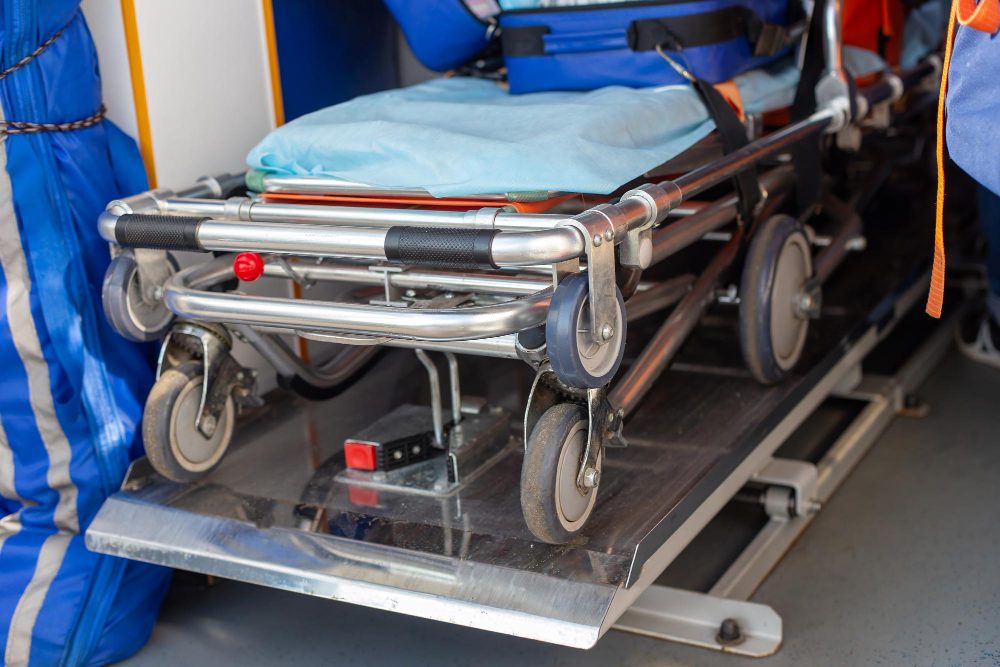
Medical transport has undergone remarkable changes over the past decade, with stretcher design leading the charge in patient safety and comfort improvements. These advancements directly impact how patients experience medical transportation, from emergency responses to routine medical appointments requiring specialized transport services.
The evolution of stretcher technology reflects a broader commitment to patient-centered care, where every detail matters in ensuring safe, comfortable, and dignified transport. Whether you need emergency medical services or scheduled medical transport, understanding these innovations can help you appreciate the quality of care available through professional stretcher transport services.
The Evolution of Medical Stretchers
Medical stretchers have come a long way from the basic canvas and pole designs used decades ago. Early stretchers prioritized functionality over comfort, often leaving patients vulnerable to discomfort during transport. The transformation began when manufacturers started incorporating feedback from paramedics, nurses, and patients themselves.
Modern stretchers now feature advanced materials, ergonomic designs, and technology integration that would have been unimaginable just twenty years ago. This evolution continues today as medical transport companies invest in cutting-edge equipment to provide superior patient care.
Key Innovations Transforming Patient Transport
Enhanced Safety Features
Contemporary stretchers incorporate multiple safety mechanisms designed to protect patients during transport. Auto-loading systems reduce the physical strain on medical personnel while minimizing patient movement during transfers. These systems use hydraulic or electric assistance to smoothly load stretchers into ambulances or medical transport vehicles.
Advanced restraint systems have replaced simple straps with sophisticated harnesses that distribute pressure evenly across the patient's body. This innovation is particularly crucial for patients with mobility limitations or those recovering from surgery who require gentle, secure positioning during transport.
Improved Comfort Technology
Patient comfort has become a primary consideration in modern stretcher design. Memory foam mattresses with pressure-relieving properties help prevent discomfort during longer transports. Temperature-regulating materials keep patients comfortable regardless of weather conditions or transport duration.
Adjustable positioning systems allow medical personnel to modify the stretcher's configuration based on patient needs. Whether someone requires elevation for breathing assistance or specific positioning for medical conditions, these systems provide customizable comfort solutions.
Lightweight Yet Durable Materials
Modern stretchers utilize advanced materials like aircraft-grade aluminum and carbon fiber composites. These materials offer exceptional strength while significantly reducing weight, making transport easier for medical personnel and reducing fuel consumption for transport vehicles.
The durability of these materials ensures stretchers maintain their structural integrity through years of regular use, providing consistent safety and performance for patients requiring medical transport services.
Technology Integration in Modern Stretchers
Digital Monitoring Capabilities
Some advanced stretchers now include integrated monitoring systems that track vital signs during transport. These systems can alert medical personnel to changes in patient condition, enabling immediate response when necessary. For non-emergency medical transport, these features provide additional peace of mind for both patients and their families.
GPS and Communication Systems
Modern medical transport vehicles often feature GPS tracking and communication systems that coordinate with stretcher-mounted equipment. This integration ensures seamless communication between transport teams and receiving medical facilities, improving care coordination and reducing transport times.
Battery-Powered Features
Electric-powered stretchers eliminate the need for manual operation of adjustment mechanisms. Battery systems power positioning adjustments, lighting, and other features without drawing power from the transport vehicle, ensuring consistent operation throughout the journey.
Specialized Stretchers for Different Medical Needs
Bariatric Transport Solutions
Specialized stretchers designed for bariatric patients feature reinforced frames and wider platforms while maintaining the same safety and comfort standards. These stretchers accommodate patients who require additional space and support during medical transport.
Pediatric-Friendly Designs
Child-specific stretchers incorporate safety features tailored to younger patients, including appropriate restraint systems and comfort accessories that help reduce anxiety during medical transport. Bright colors and friendly designs can make the transport experience less intimidating for children.
Critical Care Transport
High-acuity stretchers designed for critical care transport include mounting systems for medical equipment like ventilators, IV pumps, and monitoring devices. These stretchers essentially create mobile intensive care units, enabling safe transport of critically ill patients between medical facilities.
The Impact on Patient Experience
These innovations collectively transform the patient transport experience from a potentially stressful necessity into a more comfortable, dignified process. Patients report feeling more secure and comfortable with modern stretcher systems, which can positively impact their overall medical experience and recovery process.
For family members, knowing their loved ones are transported using state-of-the-art equipment provides significant peace of mind. The professional appearance and advanced features of modern stretchers reflect the quality and care patients can expect from reputable medical transport services.
Choosing Quality Medical Transport Services
When selecting medical transport services, the quality of equipment used reflects the provider's commitment to patient care. Reputable services invest in modern stretcher technology because they understand how these innovations impact patient safety and comfort.
Professional medical transport companies maintain their equipment according to strict standards and regularly update their fleet to incorporate the latest safety and comfort innovations. This commitment ensures patients receive the highest quality care during transport.
The Future of Medical Transport
Stretcher design continues evolving with emerging technologies like smart sensors, AI-assisted positioning, and even more advanced materials. These developments promise even greater improvements in patient safety, comfort, and care quality.
Research into patient transport experiences drives ongoing innovation, ensuring future stretcher designs will address current limitations while introducing new capabilities that further enhance patient care.
Experience the Difference Quality Makes
The innovations in modern stretcher design represent more than technological advancement—they demonstrate a commitment to treating every patient with dignity, comfort, and the highest safety standards. From emergency situations to planned medical appointments, these improvements ensure patients receive excellent care throughout their transport experience.
Professional medical transport services that invest in advanced stretcher technology show their dedication to patient welfare. When choosing medical transport, consider providers who prioritize both safety and comfort through their equipment choices and service standards.
If you're looking for stretcher transport service in Orlando, FL, contact Comfort Ride Transportation today for free estimates. Experience the difference that modern equipment and professional care can make in your medical transport needs.